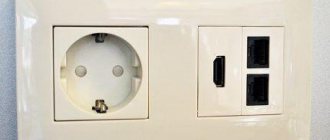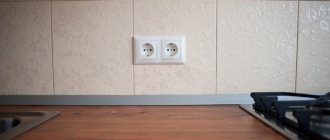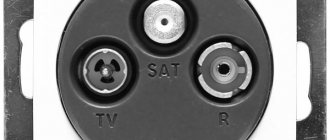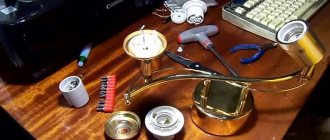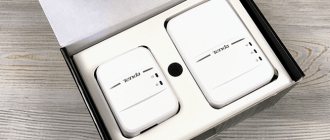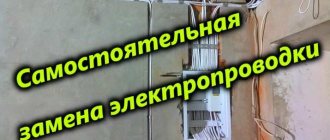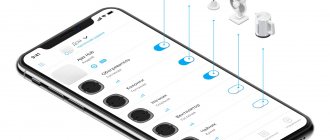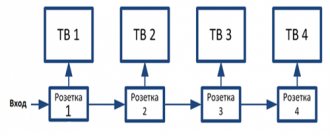Do you need to install a special socket for connecting the Internet, but you don’t want to call a technician? Agree that self-installation will save money, and you will be confident in the quality of the work performed.
But you don’t know how to connect an Internet outlet and what is required for this? We will tell you where to start - this article will explain in detail to the home craftsman and construction engineer the features of the connection, and will also give comprehensive answers to all related questions.
Visual photos and useful videos will help you understand the installation process and tell you what you need to focus on when connecting RJ-45 socket connectors.
Application options for Internet sockets
In addition to “home” use projects, there are still a sufficient number of options.
In which the installation of such sockets for the Internet will not only be relevant, but sometimes simply an original way out of a special, security-demanding situation, taking into account the technical conditions for providing access to the Internet.
Depending on the type and purpose of the building, technical requirements are put forward for the arrangement of apartments in such buildings.
There are several main categories of such premises:
- offices, classrooms and server rooms;
- Internet clubs and electronic libraries;
- IT stores and computer equipment maintenance workshops;
- structures with increased protection against penetration.
For most offices and classrooms, in addition to having wireless Internet access points, it is mandatory to equip the walls and office furniture with RJ-45 sockets, which ensure the connection of “working” computer stations to the Internet, as well as to local networks.
Not a single server-type room can do without twisted pair connectors installed in/on the walls. This is a mandatory requirement of every IT engineer who has undertaken the construction of a “server room” or data warehouse.
The design is an ideal way to provide in a limited space the entire list of necessary interfaces for connecting a laptop, phone, printer, etc.
The rapid development of technology affects all aspects of our lives and in particular education.
Now it is very “hard” to imagine an educational institution of any level, from school to university, without the presence of auxiliary search tools (computers). Who search and provide the necessary information in a huge “knowledge bank” - an electronic library.
If you are a private entrepreneur or the owner of a business that is involved in the sale and/or repair of computer and office equipment, then the presence of socket structures is simply “vital” for the normal working conditions of your employees.
And another example of mandatory equipment with Internet sockets and structures is premises for corporate and government security services.
As well as banking and other storage facilities, with increased protection against penetration, where any significant electromagnetic radiation is actually prohibited or interception of packet information via wireless data transmission is possible.
How to start a wire
Many people wonder how to connect a cable to an Internet outlet? Does it need to be cleaned, etc.?
There is no need to clean anything! We simply take a piece of the required length and push it inwards with force. The socket has “incisors” on the sides; they are made like “teeth” with a point downwards. They cut through the cable braid to the metal and prevent it from coming back out.
Thus, the connections are very strong, and there is also an additional cover on top that will not allow the wires to escape.
Types and types of Internet outlets
To understand what type of sockets we need to use in this or that case, we need to understand the general classification of sockets for the RJ-45 connector.
But first, RJ-45 is a unified standard for physically connecting computers and network switches using standard 8-conductor shielded wire, often called “twisted pair.”
Because by making a cross section of the cable, you can easily see 4 intertwined pairs of wires. This type of wire is used to build the vast majority of information transmission channels in local and public networks.
You may also be interested in information about the types of Internet cables and recommendations for selection.
Countless local and corporate networks, as well as the wired part of the Internet, have been built based on the RJ-45 interface. This is a generally accepted connector standard for transmitting data over a network.
Experts suggest the following classification of sockets:
- By the number of connectors. There are single, double and terminal sockets with 4-8 connectors. In addition, there is also a separate type of combined sockets. Such modules may contain additional types of interfaces, including audio, USB, HDMI, and RJ-45 itself.
- By data transfer speed . There are many varieties and categories, the main ones being category 3 - data transfer speeds up to 100 Mbit/s, category 5e - up to 1000 Mbit/s and category 6 - up to 10 Gbit/s over a distance of up to 55 meters.
- According to the principle of fastening. By analogy with power electrical installation products, there are internal and overhead computer sockets. For an internal socket, the mechanism (contact group of terminals) is recessed into the wall, while for an external socket it is laid along the surface of the wall.
For a socket with hidden wiring laid in the wall, it is necessary to have a protective plastic “cup” in the wall where the terminal block is attached. An external socket is usually mounted using an overhead panel on the wall surface.
Image gallery
Photo from
Standard mechanism for Legrand internet sockets
Socket option for connecting to the Internet
Connecting a modular type internet socket
Internet socket with modular blocks for twisted pair
As for manufacturers: there are many of them, domestic and foreign. Recently, “Chinese” companies producing network equipment have begun to “even out” in terms of the quality of finished products relative to others.
The products are clearly distinguished by their high quality from such world brands as Digitus, Legrand, VIKO, etc.
It is worth mentioning separately about “keystones”.
The peculiarity of keystones is that with their help you can provide almost every computer with any set of interfaces. Recently, HDMI keystones have become widespread.
This is a modular architecture for placing individual “stones” - modular connectors for a variety of audio, video, telephone, optical, Mini-DIN and other interfaces, including RJ-45 on one standard panel of the socket block.
This is a fairly flexible and scalable system for providing interfaces to the end user.
The need to install an outlet
Most of us live in multi-room apartments and private houses. For each individual room of such dwellings, it is necessary to solve one small but rather “insidious” problem: in any available way, create a “point” for connecting devices of different types to the Internet.
It would seem that the answer is obvious - buy and install a Wi-Fi router and there are no problems. But some people, to put it mildly, are not happy about the negative impact of electromagnetic waves from medium- and low-power generators on their own health, the health of their loved ones and especially young children.
When choosing an Internet socket, you need to remember that a single or double will be enough for a living room. And for the office it’s worth thinking about modular sockets
Therefore, it is worth thinking about reducing electromagnetic “smog” in our houses and apartments.
One of these methods is to install Internet sockets directly in the walls of the room.
Installation of sockets for connecting to the Internet is carried out according to the rules common to all electrical installation products. By analogy, they are produced for hidden and open wiring
You must understand that this is only one of the options for providing multipoint Internet access for laptops, desktop computers, mini-servers and personal data storage in a home/apartment/office.
The process of connecting an outlet with your own hands is given in the form of step-by-step photo instructions below.
Laying "twisted pair" in/on walls
Let's move from theory to practice. If we are talking about laying cables and wires in a new building, then no special questions should arise: we put the twisted pair next to the rest of the communications, usually in corrugated tubes, and them in the cut-out hollows.
It is imperative to remember the number of wires inserted into the channel and their average diameter, and also take into account the channel diameter + 25% of the total sum of all cable diameters.
It’s another matter if we are renovating an existing room and creating new channels. It is necessary to take into account the material from which the walls are made: frame gypsum panels, brick, concrete, etc.
The hardest thing is to make channels in concrete/brick without damaging other communications.
To detect wiring in walls, you can use any available building electromagnetic wiring detectors.
If it is not possible to remove the furniture from the premises, then it is recommended to cover it with a protective construction film. Its thickness is no more than 1 mm, and the quantity is calculated by the formula: (height of the room * perimeter of the room) + 10%
It should be noted that there will be a lot of dust if you work in concrete. As a result of gating, abrasive dust and small pebbles will cover everything in the room: walls, ceiling, floor, furniture, equipment.
Therefore, you need to initially vacate the room or cover everything with plastic film.
We strongly recommend that the master wear the following set:
- thick overalls (jacket/pants);
- headdress (you can have a swimming cap or bandana);
- glasses (we recommend ski glasses or others with protection for the temporal areas of the face);
- thin and comfortable gloves , boots, personal respiratory protection equipment (protective masks, respirators, bandages, etc.).
To create grooves (forming channels in foam concrete or brick walls), you need to use the following tools: wall chasers, wall chasers, furrow makers.
As an option, it is still possible to use powerful “grinders” with cutting discs (diamond-coated). The cutting depth of the channel should be 30-35 mm, the width up to 25 mm exclusively for one or more twisted pair wires.
Absolutely all channels and gutters must be made at right angles - this is a mandatory rule for any construction repair.
To reduce the time for installing sockets and reduce labor costs, you can use plastic mounting boxes - cable channels
As for cavities for sockets, they are made using a bolt, an electric hammer or a drill/hammer with a socket attachment.
But initially, you need to determine the approximate placement of Internet outlets in the premises. As a rule, holes for RJ45 sockets are drilled at a height of 1000-1200 mm from the floor or 150-300 mm.
For residential premises, one or two sockets on opposite walls of the room are sufficient. For offices, they usually place one outlet near the future workplace.
In server rooms and rooms with similar functions, a different strategy is used - make 3-4 holes for modular socket blocks, two blocks on one wall and one on all other walls.
And the last thing you need to pay attention to regarding the laying of wires is that sometimes it is possible to lay communications under the floor or in the ceiling of the room.
In such a situation, the question of gating the walls does not arise; it is enough to run the wire under the floor or into the ceiling and bring it out in the area of the socket hole on the wall.
When connecting an Internet outlet, it is extremely important to perform the correct pinout. In the diagram on the left, two different options for wiring a socket with clamping contacts are indicated in different colors. In the right diagram, fixation is carried out using knife mechanisms
Inserting the cable into the socket
All Internet sockets come in external and mortise versions. Each manufacturer may slightly change the cable fastening mechanism, but the principle itself remains the same.
Legrand
Legrand internet socket connection diagram
The socket from this manufacturer has a pleasant appearance and one of the best mechanisms for fixing the cores. To connect it we need to do the following:
- Using the blades in the handles of the crimping tool, we remove the outer insulation of the cable. All 4 pairs should appear. We level them so that it is convenient to work with them.
- Take the socket and remove the front panel. To do this, you need to unscrew just one bolt that secures it.
- We unfold the internal mechanism. A white locking handle is visible on the back edge. It must be turned counterclockwise. After this, part of the fittings is removed.
- The main body can be put aside for now so that it does not interfere. There is a hole in the part we removed. We insert the cable so that the white clamp faces away from us.
- On the top edge you can see two printed schemes with colors under each number. Scheme A is the second connection option, which was mentioned earlier. Scheme B is the one we need.
- In accordance with the color, we insert each individual core into the clamp. It doesn't matter if they don't go in all the way.
- Next, we take the main part, connect to it the element into which we just inserted the cores and turn the handle clockwise. When the latch fits tightly, additional notches will push our veins into the space left for them.
- Now we install our socket in the socket prepared for it and unscrew the spacers.
- We attach the front panel.
Possible connection options
Viko (Viko)
Vico internet socket
With this outlet, everything is not as simple as with the previous one:
- Remove the front panel.
- We turn it over so that the sockets for the twisted pair wires are at the top, and the front part is looking at us.
- At this stage a surprise awaits us. There are absolutely no markings or clues here. You will need the information that was given in the article under the T568-B standard.
- We clean all the veins. The manufacturer did not provide a piercing mechanism.
- We will insert them in pairs, as described earlier. We will move from right to left, in the position in which we placed the socket.
- We clamp each cable with a bolt.
- We check the correct connection using a tester. If this is not the case, then you can, without installing the socket in the socket box, plug in the cable that goes into the computer. The connection properties should show functionality.
- If everything is in order, then screw the front panel and fix the socket into the wall.
Lezard
- We start with the standard unscrewing of the front panel.
- Now you need to pull out the connector itself. To do this, you need to press the latch.
- Take a screwdriver and insert it into the hole for the cable and lift it up. The top cover should open.
- In accordance with diagram B, we insert the cores. There is no need to clean them. To recess them deeper, you can use the back of a utility knife.
- We cut off the excess parts of the cores and close the lid.
- We put the latch back and screw the panel.
- We install it in a socket box.
We disassemble the Lezard Internet outlet
How to connect an internet outlet
Well, guys, remember, I wrote about sockets behind the TV, there were three of them - a regular electric one, for an antenna, and the last one is the Internet, which is very popular nowadays. I already wrote about the first two, just follow the links, but about the last one, “tailored” for computers, I somehow kept putting it off. Today I want to correct this injustice and post complete instructions for connecting. I have a LEZARD socket, but it will be useful for everyone to look at it, because the principle is the same for everyone. As usual there will be photo and video instructions. So bookmark it...
CONTENTS OF THE ARTICLE
First, let's look at the Internet outlet itself. This is a plastic type that is inserted into a regular socket box, but is connected to an Internet cable, that is, there are no electrical wires there.
On the outside of this socket there is a connector for an RJ45 connector, which is where we then insert the wire from the network card of a computer, laptop or TV (SMART TV). Hangs on the wall to hide wires (which are embedded in the wall) and make it more aesthetically pleasing. Everything is hidden, everything is beautiful - this is the main purpose. I think now it becomes clear why it is needed!
Features of RJ-45 cable pinout
Before connecting Internet sockets, you need to clearly know and understand where and what color to mount each individual twisted pair wire. To do this, you need to know the crimping scheme and the rules for crimping RJ-45 cables yourself.
There are two main types of RJ-45 wire pinouts: straight and crossed. The first type of cable is used to connect end devices (computer/PC, smart TV/Smart TV, switch/Switch) to the so-called router.
The second type of cable is used to connect devices with similar functions (computer - computer, router - router, switch - switch) to each other.
For a direct scheme, the color matches the color in this order: white-orange, orange, white-green, blue, white-blue, green, white-brown, brown. For the cross, everything is the same, but the green ones change places with the orange ones, respectively
First, we leave about 100-150 mm from the plane of the wall along the length of the cable, and cut off the rest of the cable. This length will be sufficient for possible subsequent rewiring of the wiring.
Before starting electrical installation work, you can familiarize yourself with the crimping diagrams for twisted pair cables with 8 and 4 cores, discussed in our other article.
Now you need to free 4 pairs of wires from the outer sheath and from the foil (it acts as protective shielding), if any.
Inside the twisted pair there is also a special thread with which you can easily release all the necessary wiring. You can also use a regular knife or a special cutting surface, which is equipped with almost all crimping pliers.
Crimping pliers will help you easily mount any RJ-45 and RJ-11 connector, the main thing to remember is that if the tool itself does not press the wires enough, then you can press it with a knife or a thin screwdriver
At the next stage, we straighten all twisted pairs of multi-colored wires and carefully “seat” each individual color into its niche according to the color pinout in the socket terminal block.
This must be done in such a way that the rest of the wire with “untouched” insulation falls under the fixing clamp of the terminal block. Now we tighten the fixing bolts with a screwdriver on the terminal block and at the same time press the remaining wires so that they do not come out of their seats.
Finally, with a “feeling of strength,” we recess the clamping connectors on the terminal block with a screwdriver and separately secure each core in the terminal group, while cutting through the braid of small wires. Then we cut off the remains. The wiring must all be located at the same height from the base of the terminal block.
You may also find information about ways to extend twisted pair cables useful.
Connect the socket to the router
Now is the time to connect to the router. When laying the twisted pair, we left one tip next to it.
To do this, we need a crimper (crimping tool) and a connector (plastic plug with a latch).
It is also called press jaws
Let's get started:
- Strip 2-3 cm of twisted pair.
- Straighten the wires to make it easier to arrange them in the desired order.
- Arrange the wires in order from left to right - orange with white, orange, green with white, blue, blue with white, green, brown with white, brown.
Having arranged the cores in the desired order, we can proceed to crimping
Insert the wires into the connector until they stop. The plastic retainer (latch) should be at the bottom. Now crimp the connector using a crimper. Insert the finished cable into the appropriate socket of the router - LAN.
Checking Wiring Signals
It is worth mentioning separately the possibility of checking the presence, and most importantly the correctness, of signals passing through the 8 cores of a twisted pair cable. This can be done using a regular electrical tester.
But first you need to have a patch cord (ready-to-use wires at both ends of which are mounted, again according to a direct pinout pattern, RJ-45 connectors) and a second unmounted Internet socket or keystone.
You can buy a regular patch cord either in a store or make it yourself (connectors using a direct pinout diagram). Standard length patch cords range from 0.3 m to 5 m
We first mount the second end of the laid wire into an unmounted socket/keystone, into which we insert one end of the patch cord.
We switch the tester to the sound signal mode and compare the corresponding channels of the connectors on the patch cord and in the Internet outlet. We receive a sound signal that indicates the presence of a connection.
Not every electrical tester has a beep mode. Therefore, to check, you can switch to resistance mode and monitor the data on the digital panel
There is also the option of checking signals using special cable testers, but this requires another ready-made patch cord that works in a direct manner. We insert one end of each patch into sockets (new and temporary), and insert the other two into the tester cable.
Light and sound on the tester panel indicate the presence or absence of a signal on a particular twisted pair core. We look and check the signal.
Some cable testers, in addition to checking the presence of a signal, provide information about the cable category. This function is quite useful for premises certification
Ideally, we will receive 8 light and sound signals in sequence on the cable tester. In these two ways, you can check the correctness of the pinout and the presence of a full signal for data transmission via twisted pair.
Checking the network functionality
Now we can check how successfully we connected. To do this, you need to connect your laptop or PC one by one to all the sockets that we installed and try to access the Internet. If any of the outlets does not work, you need to check:
- correct connection of the outlet itself;
- correct connection of the cable to the router (including the quality of the connector crimp);
- integrity of the wire along the way from the router to the outlet.
There is another way to find out the performance. If your router has LAN connection indicator lights (they are usually located on the front panel), then you can connect PCs or laptops to each outlet (either simultaneously or one by one). If the corresponding LAN indicator lights up, everything is fine, there is contact. If not, you need to check for problems.
It is best to check the signal before installing the front panel and decorative plate of the socket.
Installation of the terminal block and mounting of the cover plate
After checking the signals, we move on to the final part of installing the Internet outlet.
To do this, carefully hide the rest of the wires and return the terminal block with the connected conductors back to the socket of the socket, tighten it with the fixing bolts to the built-in “glass”.
The terminal block should “sit” tightly in the socket, there should be no protruding or kinked wires.
If the terminal block does not fit into the recess of the wall, then you can cut out the back part of the mounting “glass”. Usually, when installing the terminal block, a couple of mm are missing
Once again, we check that the connection is correct; to do this, we connect a device, for example, a laptop, and see if it detects a connected local network or the Internet.
If there is no connection on the device, we return to the pinout point and re-check the correctness of the actions performed, as well as the quality of the compression. It often happens that one of the cables is simply not sufficiently pressed into the terminal block. To do this, you just need to recess the core clamp more tightly.
After an additional check of the network’s functionality, we trim off all remaining protruding wires and proceed to installing the cover plate. The cover is usually equipped with several plastic latches.
It is enough to accurately place it on the socket of the socket and press until you hear a clicking sound. That's it, the Internet socket is installed and ready for use.
If the signal does not pass through when checking the connection, you need to check the quality of the contact. It is possible that it is simply weakly clamped
Using verification software
Review and configuration of the D-Link Dir-320 modem
Users often start searching for software online, but do not realize that they already have these programs as standard on their PC. This is not only a diagnosis of network errors, but also a program responsible for the Internet icon. If she detects its absence, then the picture changes to the appropriate one. This symbolizes problems associated with a broken or shorted twisted pair cable.
No program will show you exactly where the cable is damaged, but there are solutions that have more functionality than standard ones.
An example is a good software solution called Network Traffic Monitor. It is completely free and has wide functionality, including:
- Measuring network speed in case of problems and instabilities;
- Analysis of network speed changes;
- Saving all reports on your hard drive;
- Making deep settings;
- Possibility of using useful services;
- Many languages supported.
Installing the software doesn't take even a minute. All you need to do is run the EXE file and agree to the installation. After this, the program will install and be ready to use. Network Traffic Monitor is considered one of the best testing and diagnostic programs. This is evidenced by numerous user reviews.
Conclusions and useful video on the topic
Similar instructions can be used for connecting and installing any types of Internet outlets:
They may differ in the location of contact groups and the set of interfaces, the mounting method, but this does not change the essence of the matter at all:
Connecting single or modular Internet sockets with your own hands is possible for any home craftsman, not to mention IT engineers. The main thing is to “guess” the color pinout of the cores the first time and get a high-quality data transmission signal via twisted pair.
Have you repeatedly performed electrical installation work and can supplement the information in our article with practical recommendations? Or did you install such an outlet with your own hands and encounter an interesting point that we did not mention here? Please share your tips with our readers - leave comments below this article.
Checking with a dial multimeter
This is almost the easiest way to ring a cable, since such a device is found in almost every home. To check, take green and orange pairs of veins. The procedure is as follows:
- switch the device to search for resistance;
- touch the orange veins with a chisel;
- the resistance should be set at several ohms;
- touch the green veins and carry out a similar check;
- touch the orange and green veins and get a resistance value of 100 Ohms and above.
If the measurement was successful and showed the same numbers, then this indicates the excellent condition of the wires. If pairs do not ring through, it is necessary to replace them with unused ones, for example, brown or blue.
Rules for location of connection points
If you are not a fan of “garlands” of intertwined wires, you should take the issue of socket placement seriously. After all, every manipulation of installing and moving connection points implies at least cosmetic repairs to the room.
Connecting a desktop computer requires the use of at least five sockets. Therefore, the optimal solution would be to install a block that includes several points: for a modem, monitor, system unit...
When choosing a place to install information sockets, you should focus primarily not on the “European standard” - 15 cm from the floor level, but on the number of connected equipment
To be fair, it is worth noting that it is also possible to connect computer equipment without using sockets. But this installation method is too complicated to implement. And besides, it is completely unjustified, especially in situations where you have to work with large networks.
In addition, no one can guarantee with confidence that in the near future another smart TV, computer or any other device will not be “powered” from this connection point.
If you need to build up a twisted pair cable, detailed instructions on connecting sections of Internet cable are presented here.
